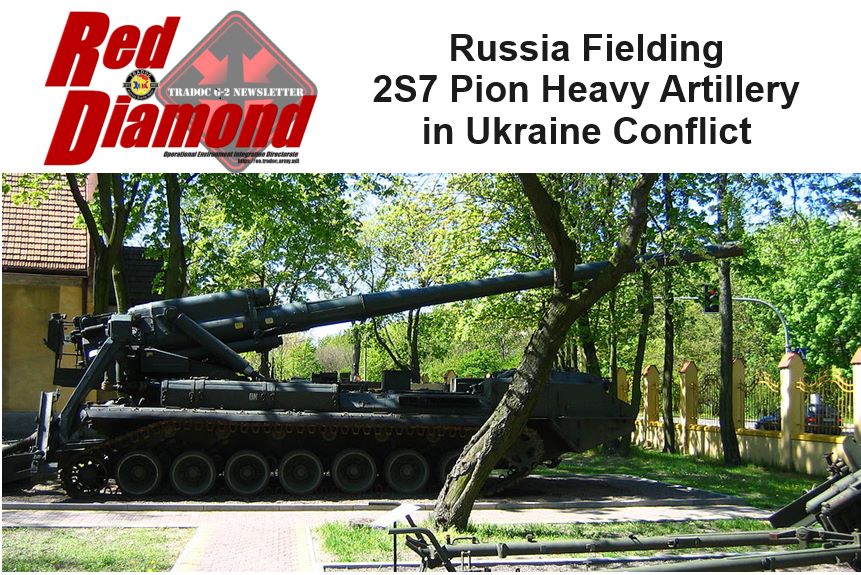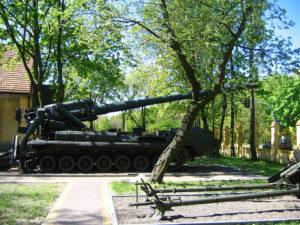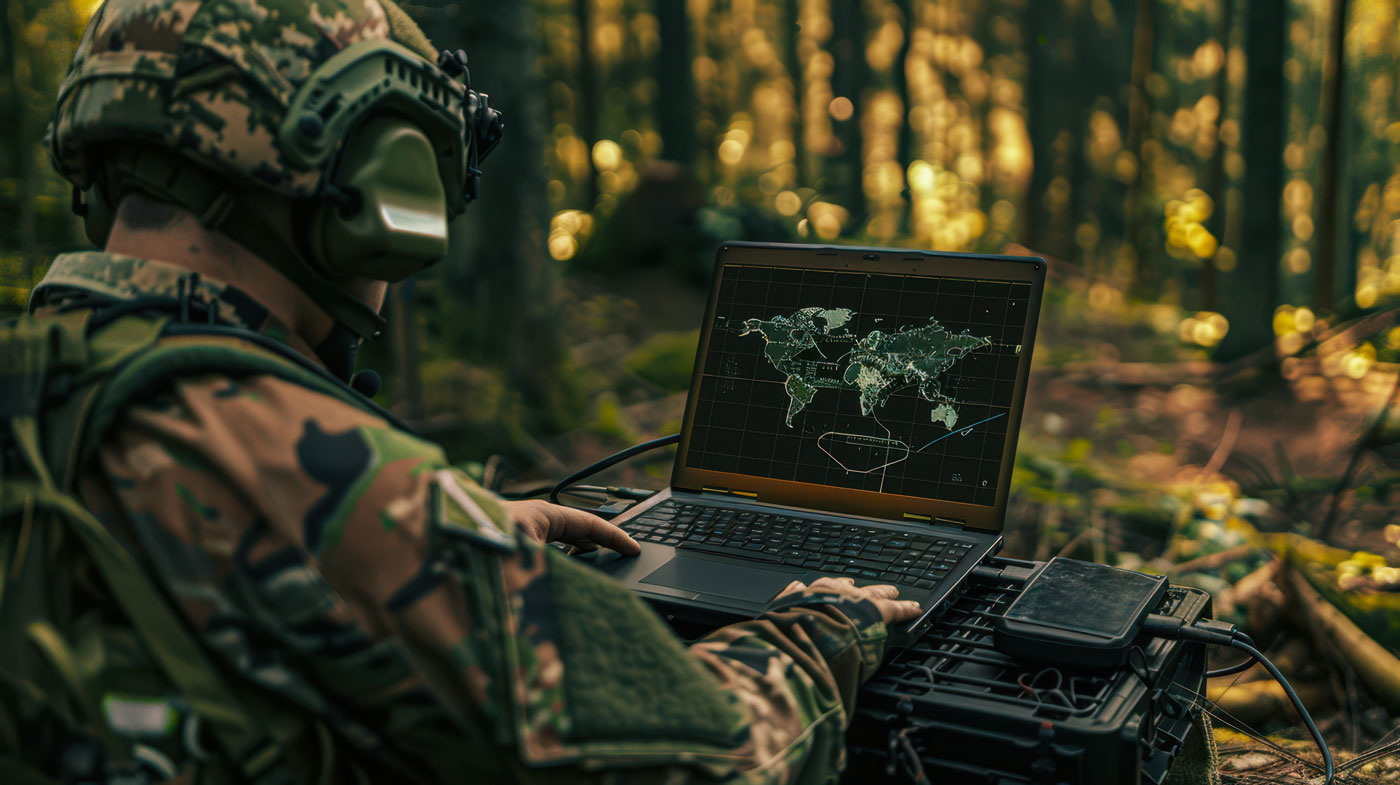
Russia Fielding 2S7 Pion Heavy Artillery in Ukraine Conflict
Colin Christopher, TRADOC G2 Analyst, Ian Kersey, TRADOC G2 Mad Scientist Initiative
Recognizing the central role fires has played in the Ukraine war, Russia has begun fielding new artillery brigades with the 2S7 Pion, a large-caliber self-propelled artillery system. The 2S7 improves counterfire capability by providing increased range and greater accuracy.
Russia has begun operationalizing the 2S7 Pion,i a large-caliber artillery system, in the conflict in Ukraine, signaling progress on previous public statements detailing plans to expand the artillery force structure. The 2S7s are 203-mm heavy artillery and are the largest self-propelled guns in the Russian inventory.ii The 2S7s are being pulled from storage, modernized, and placed into the Russian ground forces artillery units, providing increased range and accuracy for the counterbattery fight. These systems, originally designed to carry a small nuclear payload against NATO forces, are being used for long-range fire support in Ukraine.

Under the Soviet Union, large-caliber artillery systems were used to target lines of communication, enemy headquarters, tactical nuclear weapons, logistic areas, and other critical targets and to “rubble” urban areas. The primary use of these systems was to deliver conventional and tactical nuclear munitions. With the end of the Cold War, long-range tactical nuclear artillery systems were no longer required, so Russia placed them into long-term storage.iii
This changed in December 2022, when the Russians announced a major expansion of their heavy artillery force structure, creating artillery divisions and brigades like the formations that existed during the Soviet era.iv Soviet artillery divisions had brigades rather than regiments, so the heavy artillery brigades were subordinate to their respective artillery divisions. In the Soviet era, each brigade had two 2S4 battalions and two 2S7 battalions, with each battalion comprised of four batteries, and each battery had four tubes. These brigades were administrative and not designed to fight as a brigade, with their battalions or firing batteries pushed down to the combined arms armies’ artillery group.v
Russia plans to establish five heavy artillery brigades equipped with the 2S7 Pion or 2S7M Malka self-propelled guns, and reporting indicates these plans are well underway. The Malka is an improved version of the 2S7 that increases the rate of fire from 1.5 to 2.5 rounds per minute.vi Commercial satellite imagery from early 2024 depicted the movement of 2S7 systems previously held in storage.vii Corresponding open-source reporting highlights the removal of approximately 80 2S7 systems from the 94th Missile and Artillery Arsenal near Omsk, Russia in this timeframe.viii ix These systems reportedly were being sent to the first formation, the 17th Brigade in Russia’s Leningrad region.x
Russia has been secretive about the structure and command and control of these new 2S7 formations, artillery divisions, and heavy artillery brigades. However, within a brigade, these systems have historically been organized into battalions with 8-12 tubes or 2-3 batteries per battalion. As Russia has made many significant changes to its force structure since it invaded Ukraine in 2022, it remains unclear which adaptations will endure through the end of the current conflict and beyond.
Despite the questions that surround the future of Russia’s heavy artillery formations, there is ample evidence of Russia’s use of the 2S7s in Ukraine to support counterbattery fires. 2S7s have been observed operating in dispersed, two-gun formations in Ukraine, with the tracks’ firing positions in close proximity (less than 20 meters apart).xi They, along with 220-mm and 300-mm multiple-rocket launchers and ZALA Lancet loitering munitions, have been instrumental in Russia’s counterbattery efforts.
The use of 2S7s in counterfire may be due to the inadequacies of Russian 152-mm Howitzers’ range, accuracy, and lack of ammunition in counterfire roles compared to Ukraine’s Western 155-mm artillery systems.xii Russia’s 152-mm howitzer has a range of 17 kilometers compared to the 2S7, which has a 40-km range but is less agile, especially in the counterbattery role.xiii Also, the 2S7M has an upgraded fire-control system, providing more accuracy than the 152-mm howitzer.xiv The 2S7M carries a crew of 14 soldiers and eight rounds of ammunition, compared to seven crewmembers and four rounds in the Pion. The remaining crew and rounds travel in an auxiliary vehicle.xv Russian artillerymen have reportedly complained that using the 2S7 in a counterbattery role is due to the Russian Defense Ministry’s failure to field the more advanced 2S35 152-mm Koalitsiya-SV self-propelled howitzer.xvi
Russia’s fires capabilities have evolved throughout the Ukraine conflict as it continues to learn, adapt, and innovate to overcome challenges. Upgrading antiquated equipment and combining it with newer organizational and material capabilities has allowed Russia to increase long-range fires and provide alternatives to precision munition shortages. The convergence of these capabilities has strengthened the versatility of its artillery formations.
Implications for U.S. Army
-
- Fires remain central to Russia’s success in Ukraine. Russia is institutionalizing its artillery brigades with new capabilities based on what it has learned in more than two years of large-scale combat operations (LSCO). Our pacing threat, China, is watching and learning from Russia’s operations. Similarly, these changes will bear on how the U.S. Army addresses how our artillery performs fires (doctrine), our organizational construct, how we train, how our leaders employ fires, how CLASS III and V requirements can be sustained, and how our tube and rocket artillery systems may need to be maintained forward (including CLASS IX) given sustained high volume fire missions.
-
- Extensive logistic expenditures challenge sustainment. The high expenditure of all supply classes and the destruction of logistics nodes and lines of communication in LSCO will challenge the U.S. Army’s sustainment. Incorporating fires interdiction of logistics into home station and Combat Training Center (CTC) sustainment operations will better prepare our artillery units and their sustainment trains for the realities of enduring LSCO.
- Fighting and winning decisively requires rapid adaptation and innovation. Enduring LSCO in the 21st century will present the U.S. Army with several challenges. Stressing our leaders’ ability to rapidly adapt and innovate during home station training exercises and CTC rotations will better prepare them and their units for the realities of enduring LSCO
Distribution A: Approved for public release
Russia Fielding 2S7 Pion Heavy Artillery in Ukraine Conflict
Colin Christopher, TRADOC G2 Analyst, Ian Kersey, TRADOC G2 Mad Scientist Initiative
File Size:
607KB
File Type:
Page Count:
4


